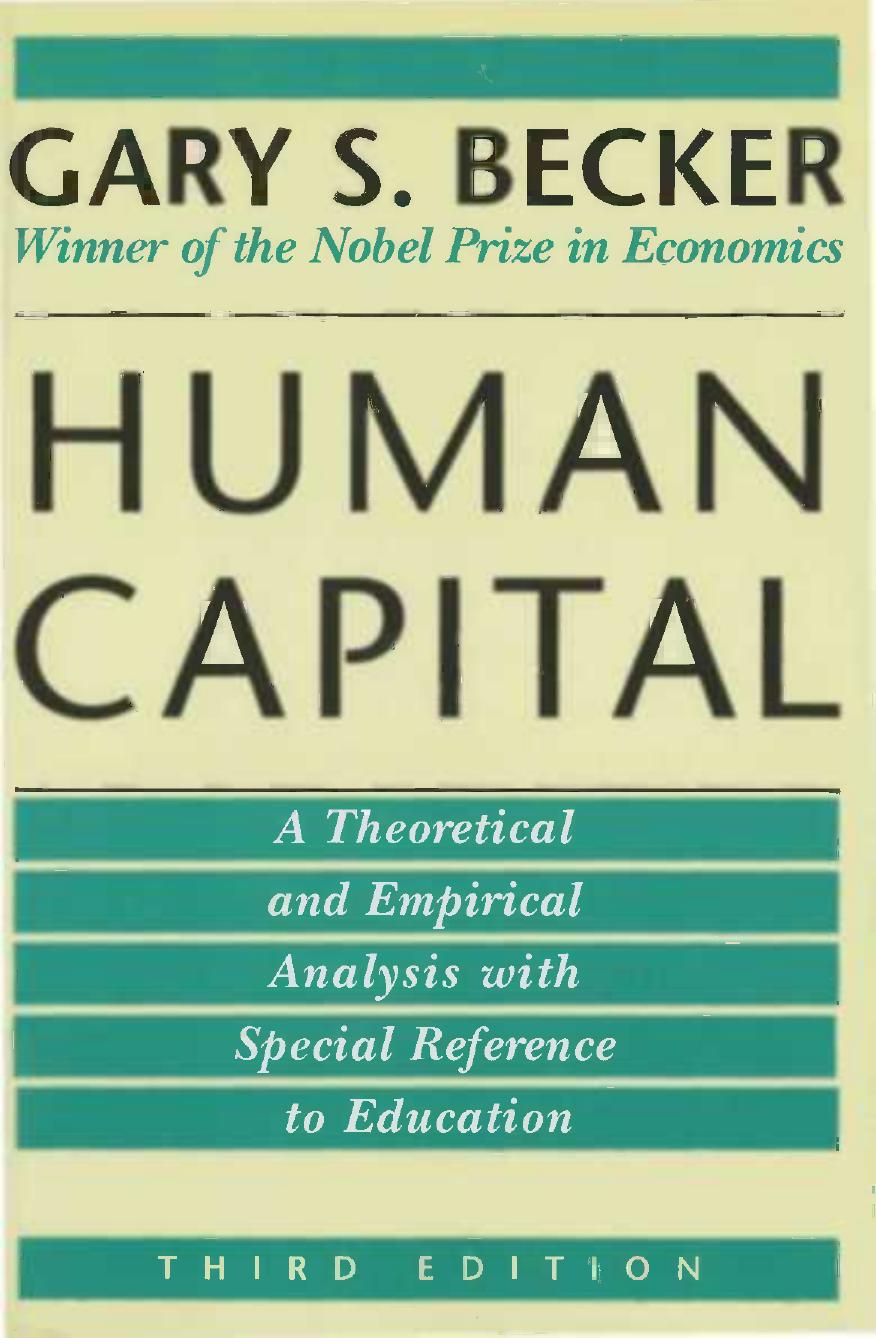Human Capital: A Theoretical and Empirical Analysis, with Special Reference to Education by Gary S. Becker

Author:Gary S. Becker
Language: eng
Format: epub, pdf
Publisher: The University of Chicago Press
CHAPTER IX
Summary and Conclusions
1. Summary
Most investments in human capital—such as formal education, on-the-job training, or migration—raise observed earnings at older ages, because returns are part of earnings then, and lower them at younger ages, because costs are deducted from earnings at that time. Since these common effects are produced by very different kinds of investment in human capital, a basis is provided for a unified and comprehensive theory. The analysis in Part One starts with a discussion of specific kinds of human capital, with the most attention paid to on-the-job training, because the latter clearly illustrates and emphasizes the common effects. This leads to a general theory applying to any kind of human capital.
The general theory has a wide variety of important applications. It helps to explain such diverse phenomena as interpersonal and interarea differences in earnings, the shape of age-earnings profiles—the relation between age and earnings—and the effect of specialization on skill. For example, because observed earnings are gross of the return on human capital, some persons earn more than others simply because they invest more in themselves. Because “abler” persons tend to invest more than others, the distribution of earnings would be very unequal and skewed even if “ability” were symmetrically and not too unequally distributed. Further, the conventional practice of adding returns to and subtracting costs from earnings serves to steepen age-earnings profiles and to increase their concavity as investment in human capital increases. Still another example, learning on and off the job has the same kind of effects on observed earnings as formal education, training, and other recognized investments in human capital, and can be considered one way to invest in human capital. Because all such activities have similar effects on earnings, the total amount invested in human capital and rates of return on this investment can, on certain reasonable assumptions, be estimated from information on observed earnings alone.
Some investments in human capital do not affect earnings because costs are paid and returns are collected not by the persons involved but by the firms, industries, or countries employing them. These investments, which are called “specific” investments, range from hiring costs to executive training and are of considerable importance. They help to explain the well-known fact that unemployment is greater among unskilled than skilled workers in the United States, for more specific capital is invested in the latter and employers have special incentive to continue them on the payroll. Similarly, incompletely vested pension plans may be used because they help to insure firms against a loss on their specific investment. The analysis further suggests that this type of investment is relatively more important in monopsonistic than in competitive firms.
Part Two investigates empirically the effect of one kind of human capital—formal education—on earnings and productivity in the United States. The basic technique used is to adjust data on the earnings or incomes of persons with different amounts of education for other relevant differences between them. Chapter IV determines the relation in recent years between earnings and college education, considering, among other things, college costs and the greater “ability” of college persons.
Download
Human Capital: A Theoretical and Empirical Analysis, with Special Reference to Education by Gary S. Becker.pdf
This site does not store any files on its server. We only index and link to content provided by other sites. Please contact the content providers to delete copyright contents if any and email us, we'll remove relevant links or contents immediately.
| Business School Guides | GMAT |
| Guides | Interviewing |
| Job Hunting | Job Markets & Advice |
| Resumes | Vocational Guidance |
| Volunteer Work |
The Motivation Myth by Jeff Haden(5156)
Audition by Ryu Murakami(4850)
Adulting by Kelly Williams Brown(4487)
The Confidence Code by Katty Kay(4187)
A Mind For Numbers: How to Excel at Math and Science (Even If You Flunked Algebra) by Barbara Oakley(3218)
Waiting in the Wings by Melissa Brayden(3178)
Self-Esteem by Matthew McKay & Patrick Fanning(3092)
Fooled by Randomness: The Hidden Role of Chance in Life and in the Markets by Nassim Nicholas Taleb(3044)
The ONE Thing by Gary Keller(3009)
Nice Girls Don't Get the Corner Office by Lois P. Frankel(2995)
The Dictionary of Body Language by Joe Navarro(2947)
How to be More Interesting by Edward De Bono(2745)
Designing Your Life by Bill Burnett(2667)
Getting Things Done by David Allen(2646)
The Plant Paradox by Dr. Steven R. Gundry M.D(2547)
Police Exams Prep 2018-2019 by Kaplan Test Prep(2485)
What Color Is Your Parachute? 2015 by Richard N. Bolles(2261)
Dangerous Personalities by Joe Navarro(2232)
When to Jump by Mike Lewis(2204)
